Home>Storage Ideas>Bathroom Storage>10 Everyday Bathroom Items You Should Clean Or Throw Out ASAP
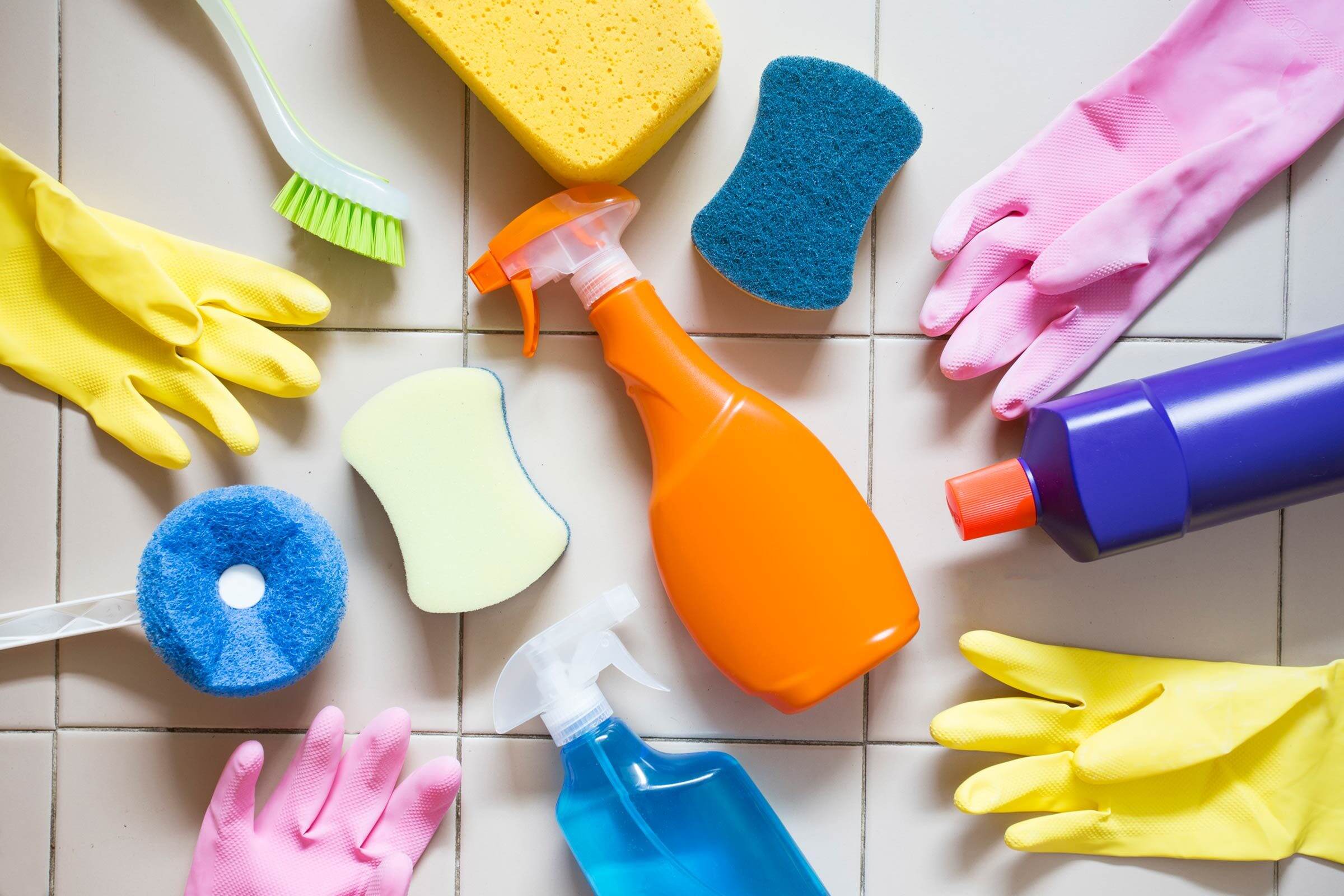

Bathroom Storage
10 Everyday Bathroom Items You Should Clean Or Throw Out ASAP
Modified: October 20, 2024
Discover the top 10 everyday bathroom items you should clean or throw out ASAP. Say goodbye to clutter and optimize your bathroom-storage for a clean and organized space.
(Many of the links in this article redirect to a specific reviewed product. Your purchase of these products through affiliate links helps to generate commission for Storables.com, at no extra cost. Learn more)
Toothbrush Holder
In every bathroom, a toothbrush holder is a common item that we all use daily. But have you ever considered the importance of cleaning or even replacing it regularly? Let’s dive into why you should pay attention to your toothbrush holder and take appropriate steps to keep it clean.
1. Bacteria Breeding Ground: Your toothbrush holder is a prime breeding ground for bacteria and germs. Every time you brush your teeth, tiny droplets of water and toothpaste residue are left behind in the holder, creating a moist environment that bacteria love. Over time, these bacteria can multiply and pose a risk to your oral health.
2. Foul Odors: If you ever noticed an unpleasant odor coming from your toothbrush holder, it’s a clear sign that it’s time for a cleaning. Bacteria and mold growth can cause foul odors, which can then transfer to your toothbrush and affect your overall dental hygiene.
3. Cleaning Tips: The good news is that cleaning your toothbrush holder doesn’t require much effort. Start by removing all the toothbrushes and rinsing the holder with hot water. Then, using a mix of dish soap and water, scrub the holder with a toothbrush or sponge. Rinse thoroughly and allow it to air dry before placing the toothbrushes back in. It’s recommended to clean your toothbrush holder at least once a week.
4. Replacement: If you notice any cracks, discoloration, or signs of excessive wear and tear in your toothbrush holder, it’s time to replace it. Old or damaged holders can harbor even more bacteria, making it harder to keep them clean.
5. Toothbrush Storage: Once your toothbrush holder is clean, it’s essential to store your toothbrushes properly. Make sure they are standing upright with the bristles facing upward to allow for proper drying. This will help prevent the growth of bacteria and promote better oral hygiene.
So, the next time you’re sanitizing your bathroom, don’t forget to give your toothbrush holder some TLC. Keeping it clean and replacing it when necessary will ensure a healthier, fresher mouth and help maintain good dental hygiene for you and your family.
Key Takeaways:
- Regularly cleaning bathroom items like toothbrush holders, shower curtains, and bath mats is crucial to prevent bacteria buildup, foul odors, and hygiene concerns, ensuring a clean and fresh bathroom environment for you and your family.
- Proper maintenance of everyday bathroom items such as makeup brushes, loofahs, and towels is essential for preventing bacteria and mold growth, promoting healthy skin, and prolonging the lifespan of these essential tools.
Shower Curtain
The shower curtain is not only a functional bathroom item but also a great opportunity to add a touch of style and personality to your bathroom decor. However, over time it can accumulate soap scum, mold, mildew, and stains, which not only look unsightly but can also affect your overall bathroom hygiene. Let’s explore why it’s important to clean your shower curtain and how to do it effectively.
1. Hygiene Concerns: Moisture and humidity in the bathroom create an ideal breeding ground for mold and mildew, which can quickly take hold on your shower curtain. These microorganisms can cause respiratory problems, allergies, and skin irritations. Regular cleaning and maintenance will help prevent their growth and keep your bathroom safe and healthy.
2. Cleaning Tips: Cleaning your shower curtain is a straightforward process. For fabric shower curtains, check the care instructions and launder it according to the manufacturer’s recommendations. Most fabric curtains can be machine-washed with a gentle detergent and on a delicate cycle. For plastic or vinyl shower curtains, you can usually clean them by wiping them down with a mixture of warm water and mild soap or using a non-abrasive cleaning spray. Rinse thoroughly and allow the curtain to dry fully before rehanging it.
3. Preventive Measures: To minimize the need for frequent cleaning, there are a few preventive measures you can take. After each shower, make sure to close the curtain fully to allow it to dry properly. Consider using a shower curtain liner in addition to the decorative curtain, which can be easily replaced or washed more frequently. Using a mildew-resistant curtain or treating it with a mold and mildew-resistant spray can also help in preventing their growth.
4. Replacement: Over time, shower curtains can become worn, torn, or faded, detracting from the overall look of your bathroom. If you notice signs of damage that cannot be cleaned or if the curtain has developed stubborn stains or odors that can’t be removed, it’s time to replace it. Consider choosing a new curtain that is easy to clean and maintain.
5. Extra Tip: It’s a good idea to regularly clean and disinfect the shower curtain hooks or rings as well. Simply remove them and let them soak in a mixture of warm water and mild soap. Rinse thoroughly and dry before reattaching them to the curtain.
A clean and well-maintained shower curtain not only enhances the overall appearance of your bathroom but also ensures a more hygienic environment. By incorporating regular cleaning and preventive measures, you can prolong the life of your shower curtain while keeping your bathroom fresh and inviting.
Bath Mat
A bath mat is an essential item in any bathroom, providing comfort, warmth, and safety. However, it is often overlooked when it comes to cleaning and maintenance. Regularly cleaning your bath mat not only ensures a clean and hygienic bathroom but also extends the lifespan of your mat. Let’s delve into why it’s important to clean your bath mat and how to do it effectively.
1. Hygiene Concerns: Bath mats are prone to collecting moisture, dirt, and dead skin cells, which create an ideal environment for bacteria, mold, and mildew to thrive. Regular use without cleaning can result in unpleasant odors and potential health risks. Cleaning your bath mat is essential for maintaining proper bathroom hygiene.
2. Cleaning Methods: The most common types of bath mats are fabric and rubber. For fabric mats, check the care instructions and launder it accordingly. Most fabric mats can be washed in a washing machine using a gentle cycle and mild detergent. For rubber mats, start by shaking off any loose dirt or debris. Then, scrub the mat with a mixture of warm water and mild soap using a brush or sponge. Rinse thoroughly and allow it to air dry before placing it back in the bathroom.
3. Preventive Measures: To minimize the need for frequent cleaning, there are a few preventive measures you can take. After each use, hang the bath mat to allow it to dry completely. Avoid leaving it bunched up or wet for extended periods, as this can promote mold and mildew growth. Additionally, consider using a bath mat with anti-slip features to prevent accidents in the bathroom.
4. Replacement: Over time, bath mats can become worn, discolored, or lose their effectiveness in providing grip and absorbency. If your bath mat shows signs of excessive wear and tear, it’s time to replace it. It’s recommended to replace your bath mat every one to two years or as needed.
5. Extra Tips: To maintain your bath mat’s cleanliness and freshness, consider giving it a quick shake or vacuum whenever you’re cleaning the bathroom. This will help to remove any loose dirt or debris. Additionally, consider using a mildew-resistant or quick-drying bath mat to help prevent the growth of mold and mildew.
A clean and well-maintained bath mat not only enhances your bathroom’s aesthetic appeal but also keeps your feet cozy and safe. By incorporating regular cleaning and preventive measures, you can ensure a clean and hygienic bathroom environment for you and your family.
Toilet Brush
A toilet brush is an essential tool for maintaining cleanliness and hygiene in your bathroom. It helps you effectively clean your toilet bowl and keep it free from stains and bacteria. However, it’s important to remember that the toilet brush itself requires regular cleaning and upkeep. Let’s explore why it’s essential to clean your toilet brush and how to do it properly.
1. Bacteria Buildup: Your toilet brush is constantly exposed to harmful bacteria and germs when used to clean the toilet bowl. Over time, these bacteria can accumulate on the bristles and handle of the brush, creating a potential health hazard. Cleaning your toilet brush is crucial for preventing cross-contamination and maintaining a hygienic bathroom environment.
2. Cleaning Methods: Cleaning your toilet brush is a simple process. After each use, rinse the brush thoroughly with hot water to remove any debris or residue. Then, fill a bucket or basin with a mixture of hot water and disinfectant, such as bleach or a toilet bowl cleaner. Soak the brush in the solution for about 15-30 minutes to kill any remaining bacteria. Once soaked, remove the brush and rinse it under running water. Allow it to air dry completely before placing it back in its holder.
3. Maintenance Tips: To prevent the buildup of bacteria on your toilet brush, it’s important to practice good maintenance habits. After each use, ensure that excess water is removed by tapping the brush against the inside of the toilet bowl. This helps to minimize moisture, which can promote bacterial growth. Additionally, store your toilet brush in a clean and dry holder that allows for proper ventilation.
4. Replacement: Even with regular cleaning and maintenance, toilet brushes can wear out over time. If you notice that the bristles are frayed, damaged, or that the brush is no longer effective in cleaning your toilet bowl, it’s time to replace it. Ideally, you should replace your toilet brush every six months to a year, depending on use.
5. Hygiene and Safety: When cleaning your toilet brush, it’s important to prioritize your own hygiene and safety. Wear gloves and ensure good ventilation in the bathroom when dealing with cleaning solutions. After cleaning, remember to thoroughly wash your hands to prevent any potential contamination.
Regularly cleaning and maintaining your toilet brush is an essential part of ensuring a clean and hygienic bathroom. By following these simple steps, you can effectively prevent the buildup of bacteria and keep your toilet brush in excellent condition for efficient cleaning.
Soap Dish
A soap dish is a small but crucial item in your bathroom that holds your bar soap and keeps it from getting soggy or slipping out of your hands. While it may seem insignificant, it’s important to regularly clean your soap dish to prevent the buildup of bacteria and keep it looking fresh. Let’s explore why cleaning your soap dish is essential and how to do it effectively.
1. Bacteria Breeding Ground: Soap bars are designed to cleanse and remove dirt and bacteria from your skin, but they can inadvertently contribute to the growth of bacteria on your soap dish. When left wet or damp, the soap residue can mix with water and create an ideal breeding ground for bacteria. Regular cleaning of your soap dish helps prevent the accumulation of germs and promotes better hygiene.
2. Cleaning Methods: Cleaning a soap dish is a simple task that can be done with just a few steps. Start by removing any soap residue or lingering pieces of soap from the dish. Then, rinse the dish with warm water to remove any loose dirt. Next, apply a small amount of mild dish soap or a mixture of soap and warm water to the dish. Use a sponge or brush to gently scrub the surface of the dish, paying extra attention to any crevices or corners. Rinse thoroughly with warm water and dry the dish completely before placing the soap back in.
3. Preventive Measures: To reduce the need for frequent cleaning, there are a few preventive measures you can take. Encourage family members or guests to rinse off any excess soap residue from their hands before placing the bar back in the dish. This helps minimize the buildup of soap scum and makes the cleaning process easier. Additionally, consider using a self-draining soap dish that allows water to drain away, preventing excess moisture and reducing the chance of bacterial growth.
4. Replacement: Over time, soap dishes can become worn, discolored, or cracked, detracting from the overall appearance of your bathroom. If you notice any signs of damage that cannot be cleaned or if the dish has become difficult to clean due to deep stains or buildup, it’s time to replace it. Choose a new soap dish that matches your bathroom decor and is easy to clean and maintain.
5. Extra Tips: It’s a good idea to clean your soap dish at least once a week, or more frequently if necessary. Consider using a mixture of vinegar and water to remove stubborn stains or soap scum. You can also try soaking the dish in a solution of warm water and baking soda for a more thorough clean.
Cleaning your soap dish not only helps maintain a clean and hygienic bathroom but also ensures that your bar soap lasts longer and remains functional. By incorporating regular cleaning and preventive measures, you can keep your soap dish looking fresh and enhance your overall bathroom experience.
To keep your bathroom clean and hygienic, regularly clean items like toothbrush holders, shower curtains, and bath mats. Replace old loofahs and expired medications to maintain a healthy environment.
Makeup Brushes
Makeup brushes are essential tools for achieving flawless makeup application. They come into contact with various products and can quickly accumulate product buildup, oil, bacteria, and dead skin cells. Regular cleaning of your makeup brushes is crucial not only for maintaining their performance but also for promoting healthy skin. Let’s explore why cleaning your makeup brushes is important and how to do it effectively.
1. Product Buildup and Bacteria: Makeup brushes are exposed to various types of products, such as foundation, powder, blush, and eyeshadow. Over time, these products can build up on the bristles, leading to a decrease in brush performance and potentially causing breakouts or skin irritation. Additionally, the warm and moist environment of your makeup bag or storage can promote the growth of bacteria and mold. Cleaning your brushes helps remove these unwanted residues and ensures a clean application.
2. Cleaning Methods: Cleaning your makeup brushes doesn’t have to be a complicated process. Start by rinsing the bristles under lukewarm water to remove any excess makeup. Then, apply a small amount of mild shampoo or brush cleanser to your palm or a cleaning mat. Swirl the brush gently in the cleanser, creating a lather. Rinse the brush under water, being careful to avoid wetting the handle or the metal ferrule where the bristles are connected. Repeat the process until the water runs clear. Gently reshape the bristles and lay the brushes flat on a clean towel or hang them upside down to air dry.
3. Frequency of Cleaning: The frequency at which you clean your makeup brushes depends on how often you use them. As a general guideline, it’s recommended to clean your brushes once a week for brushes used with liquid or cream products, like foundation or concealer. For brushes used with powder products, such as eyeshadow or blush, you can clean them every two to four weeks. However, if you notice a lot of product buildup or experience skin issues, it’s best to clean them more frequently.
4. Brush Replacement: Over time, makeup brushes can become worn, lose their shape, or develop shedding bristles. If you notice significant shedding, damage to the brush handle, or if the brushes no longer perform as they should, it’s time to replace them. Investing in high-quality brushes and taking proper care of them will help prolong their lifespan.
5. Extra Tips: To keep your brushes in great condition, avoid soaking them in water or getting the ferrule wet, as it can weaken the glue that holds the bristles. Additionally, avoid drying your brushes upright, as water can seep into the ferrule and cause damage. It’s also a good idea to spot clean your brushes in between regular deep cleanings by using a brush cleanser or a quick-drying spray specifically designed for makeup brushes.
Regularly cleaning your makeup brushes not only enhances their performance but also helps maintain healthy skin. By following these cleaning tips and incorporating them into your beauty routine, you’ll prolong the life of your brushes and ensure a flawless makeup application every time.
Loofah or Sponge
A loofah or sponge is a common bathing accessory used to exfoliate and cleanse the skin. While these tools help remove dead skin cells and refresh the body, they can also become breeding grounds for bacteria if not properly cleaned and cared for. Regularly cleaning your loofah or sponge is essential for maintaining hygiene and ensuring its effectiveness. Let’s explore why it’s important to clean your loofah or sponge and how to do it effectively.
1. Bacteria and Mold Growth: When in use, a loofah or sponge comes into contact with your skin, body wash, and any residual dirt. The moist and warm environment of the bathroom provides an ideal breeding ground for bacteria, mold, and mildew. Regular cleaning of your loofah or sponge helps prevent the accumulation of these microorganisms and keeps your bathing routine hygienic.
2. Cleaning Methods: Cleaning your loofah or sponge is a simple process that can be done after each use. Start by rinsing it thoroughly with warm water to remove any soap residue or debris. Then, soak it in a solution of equal parts water and white vinegar or a diluted bleach solution for 5-10 minutes to kill bacteria. Rinse the loofah or sponge again under running water to ensure all traces of cleaning solution are removed. Squeeze out any excess water and allow it to air dry in a well-ventilated area away from direct sunlight.
3. Replacement: Over time, loofahs and sponges can become worn out and harbor bacteria despite regular cleaning. It’s important to replace them periodically to maintain proper hygiene. If you notice frayed or discolored fibers, a foul odor, or other signs of deterioration, it’s time to get a new loofah or sponge. As a general guideline, replace your loofah or sponge every 2-3 months.
4. Preventive Measures: To minimize the risk of bacteria growth, there are a few preventive measures you can take. After each use, thoroughly wring out your loofah or sponge to remove excess water and hang it in a well-ventilated area to dry completely. Avoid leaving it in the shower or any area where it remains constantly wet, as this promotes the growth of bacteria. Additionally, avoid sharing your loofah or sponge with others to prevent the spread of germs.
5. Extra Tips: If you prefer using a sponge, opt for ones made of natural materials such as konjac, sea sponge, or bamboo, as they tend to harbor fewer bacteria compared to synthetic ones. It’s also a good idea to clean your loofah or sponge more frequently if you have sensitive or acne-prone skin.
By incorporating regular cleaning and proper maintenance, you can ensure that your loofah or sponge remains an effective and hygienic part of your bathing routine. By taking these steps, you’ll enjoy refreshed and healthy skin every time you step into the shower or tub.
Towels
Towels are a bathroom essential that we use every day for drying off after a shower or bath. While they are designed to absorb moisture and keep us clean, towels can become breeding grounds for bacteria, mold, and unpleasant odors if not properly cared for. Regular cleaning and maintenance of your towels are essential for maintaining their functionality and hygiene. Let’s explore why it’s important to clean your towels and how to do it effectively.
1. Bacteria and Odor Buildup: Towels can trap moisture, dead skin cells, and oils from our bodies, creating an ideal environment for bacteria to thrive. This can lead to unpleasant odors and potential health risks. Regular cleaning of your towels helps prevent bacterial growth and keeps them fresh and hygienic.
2. Washing Instructions: It’s important to follow the washing instructions specific to your towels, as different materials may require different care. In general, towels can be washed in warm water with a mild detergent. Avoid using fabric softeners as they can reduce absorbency. For white towels, consider adding bleach to the wash cycle to keep them bright. For colored towels, use color-safe bleach or opt for an oxygen-based bleach alternative.
3. Drying Methods: After washing, it’s important to thoroughly dry your towels to prevent moisture retention and the growth of mold or mildew. Tumble dry on a low or medium heat setting until the towels are completely dry. Avoid over-drying as it can lead to stiffness or damage. If weather permits, you can also hang your towels outdoors to dry in the sunlight, which can help naturally kill bacteria.
4. Frequency of Washing: The frequency at which you should wash your towels depends on their usage and personal preference. As a general guideline, it’s recommended to wash bath towels every three to four uses. However, hand towels and face towels should be washed more frequently, ideally after each use. If you or someone in your household has a specific skin condition or allergy, consider washing towels more frequently to maintain optimal cleanliness.
5. Replacement: Over time, towels can become worn out, lose their absorbency, or develop a musty odor that cannot be removed. If your towels are no longer effectively drying you off or if they have become damaged or discolored, it’s time to replace them. Investing in high-quality towels and taking proper care of them will prolong their lifespan.
Extra Tips: To keep your towels fresh, avoid hanging them in a damp bathroom, as moisture can accumulate and promote bacterial growth. Instead, hang them in a well-ventilated area or use towel hooks that allow for proper air circulation. Additionally, avoid using towels for purposes other than drying off your body, as they can pick up dirt and bacteria from other surfaces.
Regular cleaning and proper care of your towels are essential for a clean and hygienic bathroom experience. By following these tips, you can extend the life of your towels, prevent bacterial growth, and enjoy the comfort of fresh and absorbent towels every time you step out of the shower.
Trash Can
The trash can is an often overlooked yet essential item in every bathroom. It serves as a convenient and hygienic solution for disposing of waste. However, just like any other item in your bathroom, the trash can requires regular attention to maintain cleanliness and prevent unpleasant odors. Let’s explore why cleaning your trash can is important and how to do it effectively.
1. Bacteria and Odor Buildup: The trash can collects various types of waste, including tissues, wrappers, and other personal hygiene products. Over time, bacteria can multiply, and unpleasant odors can develop, making it an unhygienic and unpleasant environment. Regular cleaning of your trash can is necessary to ensure proper waste disposal and maintain a fresh and odor-free bathroom.
2. Cleaning Methods: Cleaning your trash can doesn’t have to be a daunting task. Start by emptying the trash and removing any loose debris or trash bags. Rinse the trash can using hot water and a mild detergent or disinfectant. Use a scrub brush or sponge to thoroughly clean all surfaces, including the inside and outside of the can, as well as the lid and any handles. Rinse again with hot water and allow the can to air dry completely before replacing the trash bag.
3. Preventive Measures: To minimize the need for frequent cleaning, there are preventive measures you can take to maintain a cleaner trash can. Always use a properly sized trash bag that fits securely inside the can to prevent any leakage or spills. Consider using trash bags with odor-reducing properties, such as scented or activated charcoal bags. Additionally, avoid placing wet or liquid waste directly into the trash can, as this can lead to moisture buildup and bacterial growth.
4. Dealing with Odors: Even with regular cleaning, odors may occasionally develop in your trash can. To address this, you can sprinkle baking soda or place a fabric softener sheet at the bottom of the can before inserting a new trash bag. Baking soda neutralizes odors, while fabric softener sheets leave a fresh scent. Another option is to use odor-neutralizing sprays or air fresheners specifically designed for trash cans.
5. Extra Tips: It’s a good idea to clean your trash can at least once a month or more frequently if needed. Consider designating a specific day for trash can cleaning as part of your regular cleaning routine. It’s also a good practice to wipe down the outside surface of the trash can regularly to keep it clean and free from dirt or dust.
Regularly cleaning and maintaining your trash can ensures proper waste disposal and a fresh-smelling bathroom. By following these cleaning tips and adopting preventive measures, you can keep your trash can clean, hygienic, and free from unpleasant odors.
Read more: How To Clean Throw Up Out Of A Mattress
Toilet Seat Cover
A toilet seat cover is a protective barrier that provides a hygienic and comfortable surface for sitting on the toilet. It helps prevent direct contact with the seat, reducing the risk of contamination from germs and bacteria. However, just like any other item in your bathroom, the toilet seat cover requires regular cleaning and maintenance to ensure cleanliness and prevent the spread of harmful bacteria. Let’s explore why cleaning your toilet seat cover is important and how to do it effectively.
1. Bacteria and Contamination: Toilet seat covers can accumulate bacteria, bodily fluids, and other forms of contamination over time. This can create an unhygienic environment and increase the risk of spreading germs and infections. Regular cleaning of your toilet seat cover is essential to maintain cleanliness and promote good bathroom hygiene.
2. Cleaning Methods: Cleaning your toilet seat cover can be a simple process. Start by removing the cover from the toilet seat and rinsing it with warm water to remove any visible debris or stains. Then, use a mild detergent or antibacterial soap and a sponge or soft brush to gently scrub the surface of the cover. Pay attention to any folds or crevices where bacteria might accumulate. Rinse thoroughly with water until all the soap residue is removed. Allow the cover to air dry completely before placing it back on the toilet seat.
3. Preventive Measures: To minimize the need for frequent cleaning, there are preventive measures you can take to keep your toilet seat cover cleaner for longer periods. Encourage family members or guests to use the cover carefully and avoid placing excessive pressure on it, as this can lead to tearing or damage. Additionally, consider using a disposable toilet seat cover that can be replaced after each use, eliminating the need for regular cleaning.
4. Frequency of Cleaning: The frequency at which you clean your toilet seat cover depends on personal preference and usage. It’s recommended to clean it at least once a week or more frequently if you notice visible stains or odor. If you choose to use disposable seat covers, be sure to dispose of them properly after each use to maintain a clean and hygienic bathroom environment.
5. Replacement: Over time, toilet seat covers can become worn, stained, or damaged. If you notice any signs of wear and tear that cannot be cleaned or repaired, it’s time to replace the cover. Additionally, if you choose to use disposable seat covers, always keep an adequate supply on hand to ensure a clean and fresh cover whenever needed.
Extra Tips: It’s a good practice to disinfect the toilet seat itself regularly, in addition to cleaning the seat cover. Use a disinfectant cleaner or wipes to sanitize the toilet seat surface and reduce the presence of bacteria. Regular cleaning and disinfection of both the seat and the cover will help maintain a clean and hygienic bathroom environment.
Regular cleaning and maintenance of your toilet seat cover are essential for promoting good bathroom hygiene and reducing the risk of contamination. By following these cleaning tips and adopting preventive measures, you can ensure a clean and comfortable surface for your toilet use.
Frequently Asked Questions about 10 Everyday Bathroom Items You Should Clean Or Throw Out ASAP
Was this page helpful?
At Storables.com, we guarantee accurate and reliable information. Our content, validated by Expert Board Contributors, is crafted following stringent Editorial Policies. We're committed to providing you with well-researched, expert-backed insights for all your informational needs.

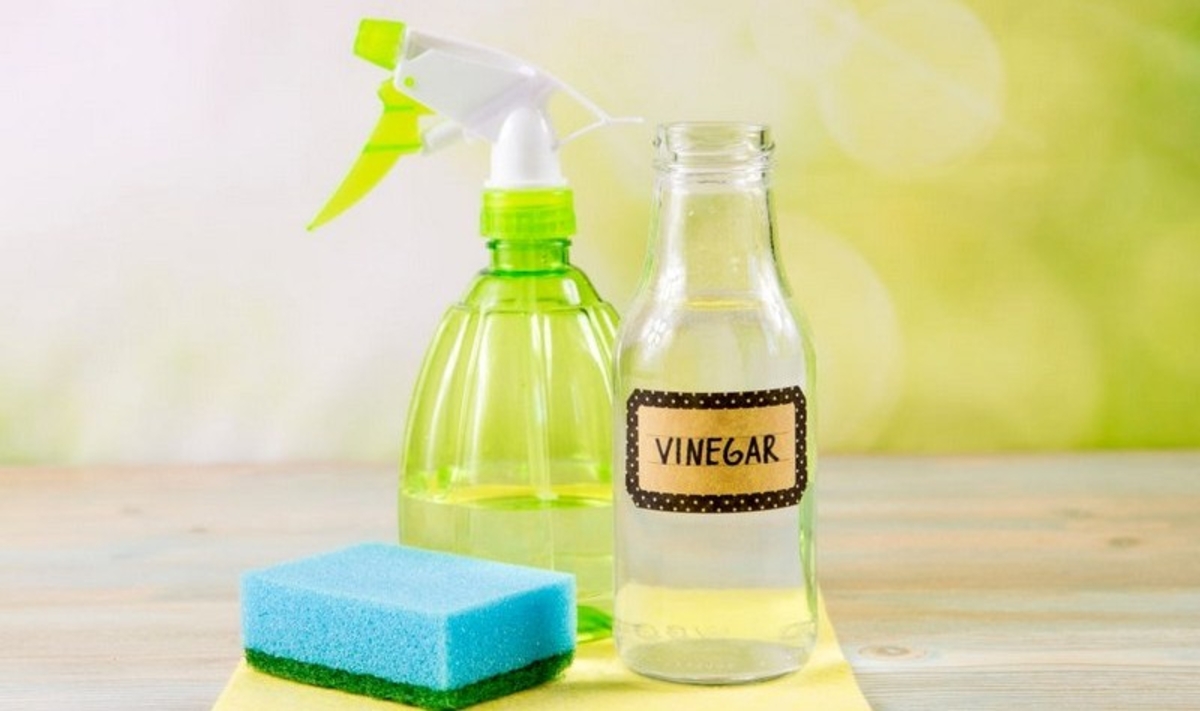
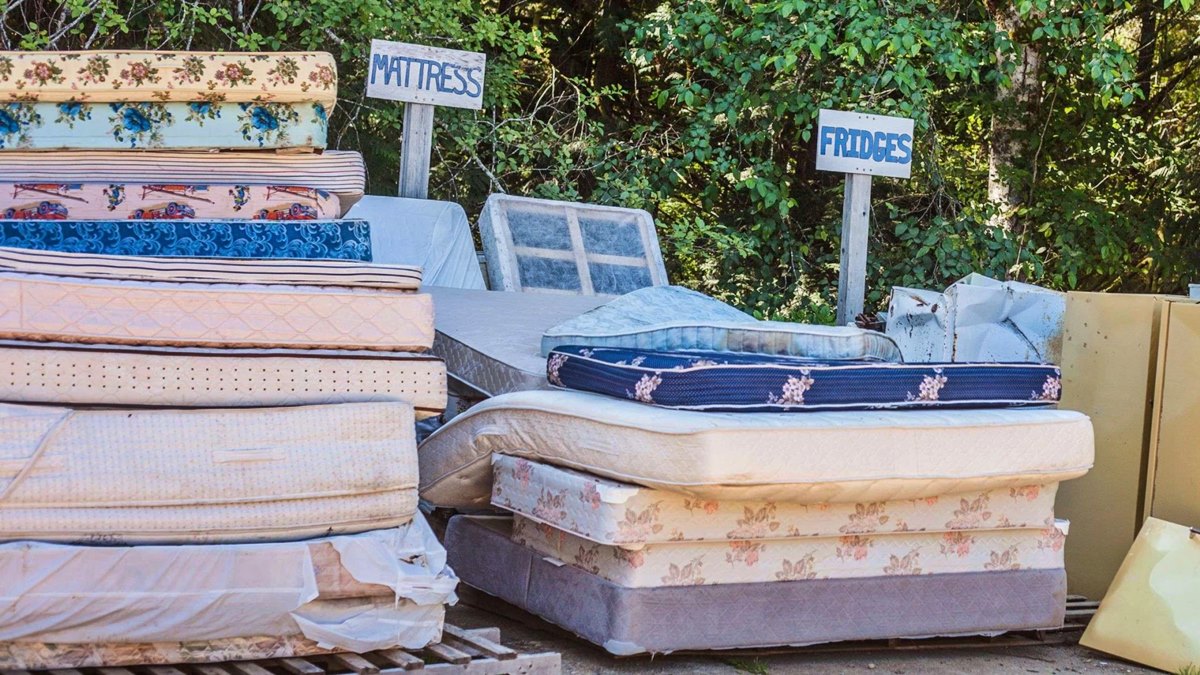

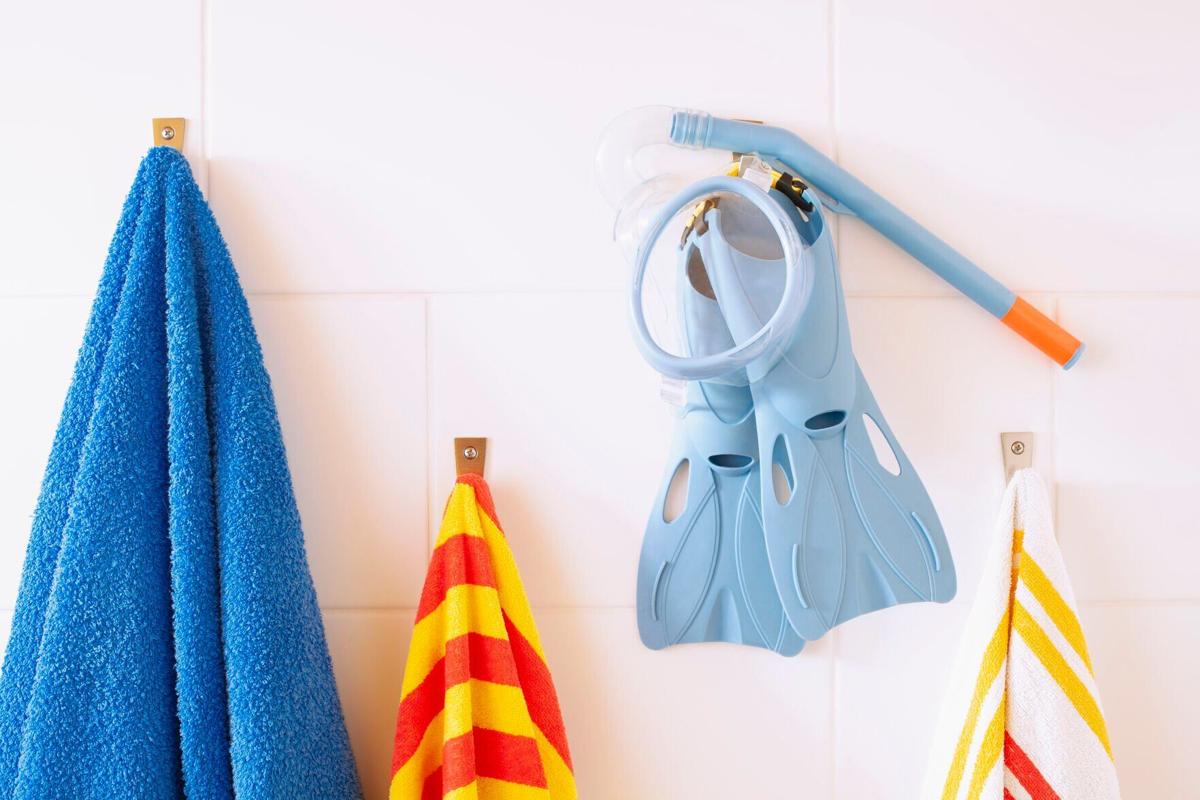

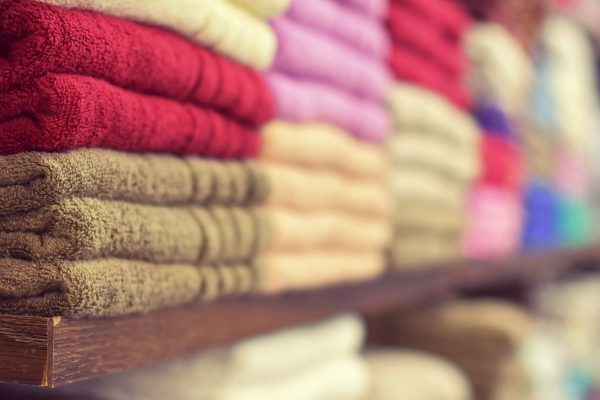

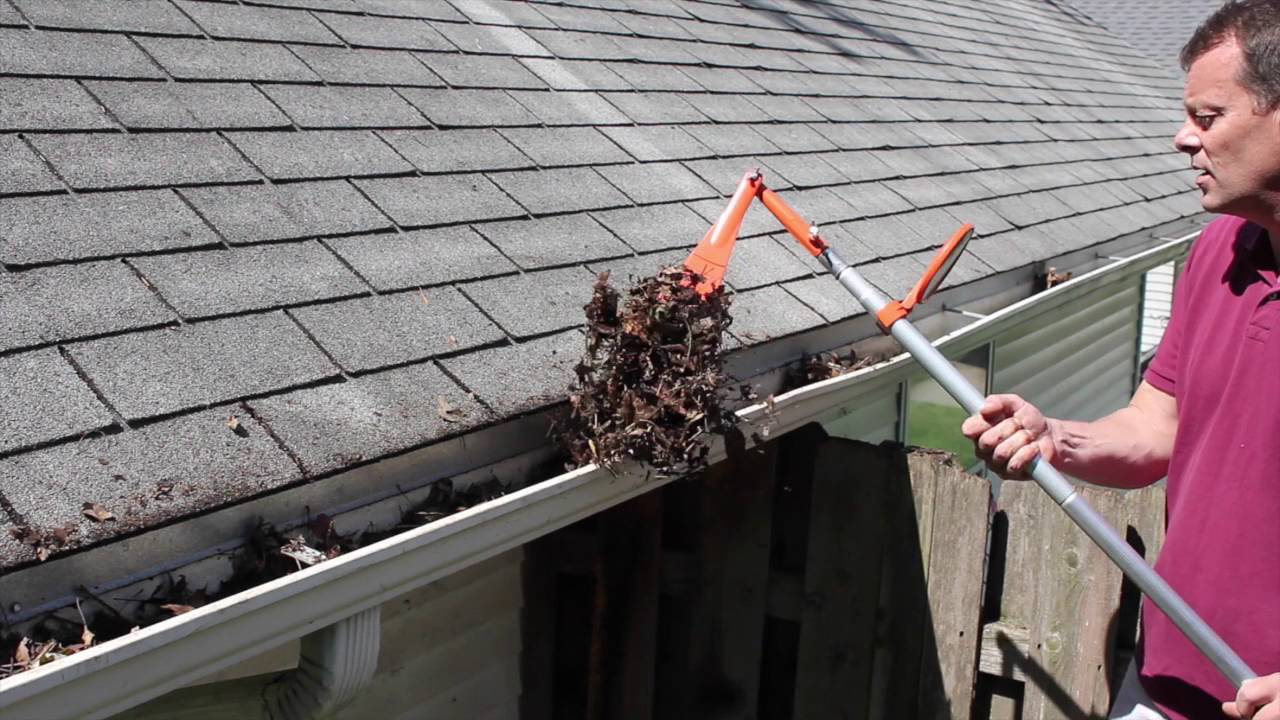

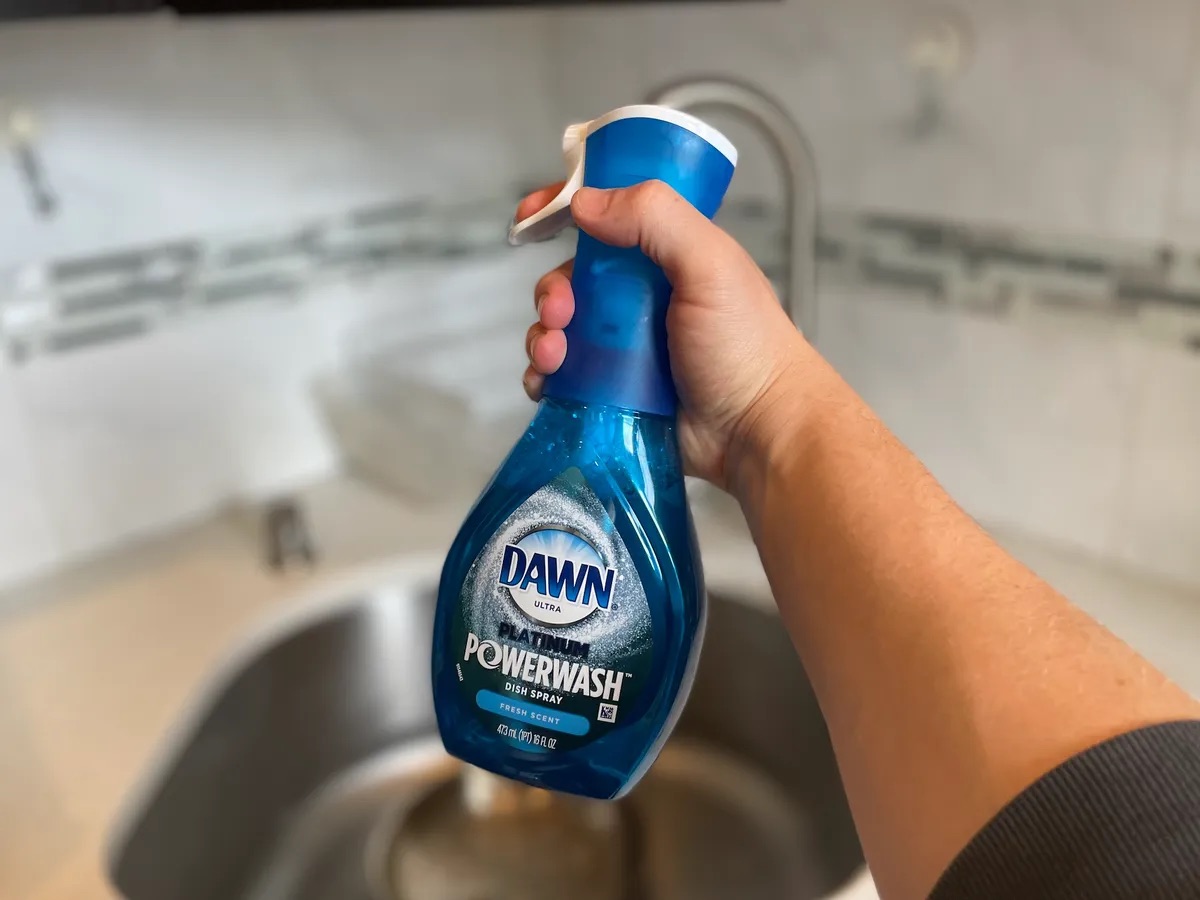



0 thoughts on “10 Everyday Bathroom Items You Should Clean Or Throw Out ASAP”